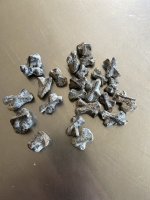Wilderness medic
Jr. Member
- Dec 1, 2018
- 71
- 106
- Primary Interest:
- All Treasure Hunting
Normally I hate laws restricting freedoms but I cant say I've ever been bummed about dredging being banned in California. I feel like its gotta do some serious bad things to out waterways, especially when its already so low with fish dying off and unable to spawn as easy.
But I really don't know anything about it other than an uneducated guess. Does it screw up the environment? I always feel like I'm jacking up waterways just be using my sluice and choking out all the water dwelling creatures downstream. I would assume rearranging massive piles of riverbeds can't be good.
Educated me?
But I really don't know anything about it other than an uneducated guess. Does it screw up the environment? I always feel like I'm jacking up waterways just be using my sluice and choking out all the water dwelling creatures downstream. I would assume rearranging massive piles of riverbeds can't be good.
Educated me?





